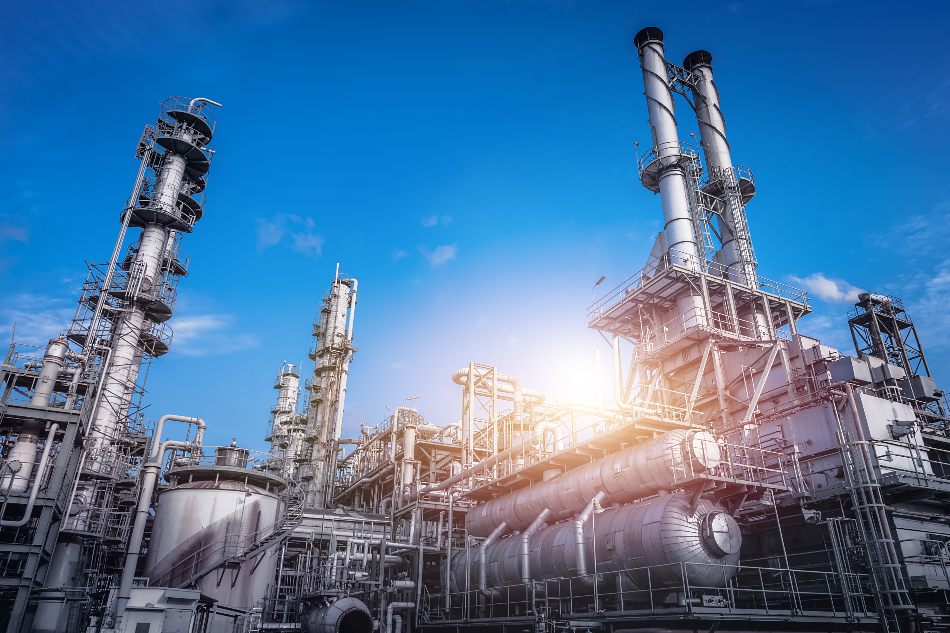In the global energy market, hydrocarbons have been the principal source of energy supply. Global energy demand has increased significantly over the last few decades, but the discovery of new oil and gas resources is diminishing constantly.

Image Credit: Manine99/Shutterstock.com
The readily accessible and easily recoverable hydrocarbon basins are declining quickly, leading to a significant drop in total oil and gas production. Research has revealed that these challenges faced in the recovery of oil and gases can be overcome by using nano additives. Nano-sized additives affect gases directly or indirectly in various other ways. Some of the instances are discussed below:
Impact of Nano-sized Additives on Hydrogen Tribology
Metallic surfaces exposed to hydrogen gas environments can act as catalysts to break down the gas molecules into atoms. In the atomic state, hydrogen can penetrate the metal surface and negatively influence its properties. Nano additives are currently receiving much interest because their small size facilitates the penetration of tribological contacts of the most intricate contact geometries. They help in reducing surface roughness by filling out the contact asperities and, thereby, forming a protective film, resistant to pressure.
Amongst the wide range of nano additives, WS2 nanoparticles have revealed the potential to reduce wear and friction significantly better than conventional lubricants. WS2 nano additives can positively interact with the wear track and reduce the hydrogen environment by continuously generating a protective film through the reaction of the 2H-WS2 nanoparticles with the wear track. This restricts the formation of catalytic surfaces during chafing, preventing the decomposition of water molecules generating atomic hydrogen. Recent research at the University of Southampton uses thermal desorption spectroscopy to show that some additives can reduce the amount of hydrogen permeating into the bearing steel.
Controlled Gas-releasing Nano additives for Therapeutic Applications
Gas therapy is currently a fast-emerging topic of research that can help treat a variety of diseases. The principle challenge of delivering medicinal gas is the delivery of the gas over an appropriate time interval, as well as to a target area. Nanoparticle gas carriers have overcome various challenges in gas delivery, including the prevention of gas diffusion in transportation, improving the stability of the gas in the complex biological environment, specifically targeting the tissue, and controlled gas release for efficiently programmed treatment modality.
Reduction of the Exhaust Gas Emission of the Diesel Engine using Nano Particles Additives
There are two methods of reducing the exhaust gas emission of the diesel engine: (i) using exhaust gas treatment devices like a catalytic converter and diesel particulate filter and (ii) using fuel nano additives. The first method negatively affects the performance of a diesel engine. The second method is considered the best method where nano-sized additives and water emulsified fuels reduce emissions and also improve the performance of the diesel engine. Ceria (CeO2) nanoparticles have been increasingly used in Europe and elsewhere as a diesel fuel additive. Also, nano CuO, CuCl2, CoCl2, FeCl3 and CuSO4 can be used as a catalyst for diesel engines. These metal-based additives are used with dosing of 5–50 mmol.
Effects of Additives on Nanostructure and Gas-sensing Properties
There are several nano additives which are utilized as H2 gas nanosensors. Nano-ZnO exhibits higher sensitivities to LPG and C2H2 than to H2 and CO. When nano-ZnO and ZnO-Ag are compared, nano-ZnO-Ag exhibits high sensitivity towards H2 at < 200 °C with a response time of less than 15s.
This article focuses on current nanotechnology-based research conducted by various researchers and highlights how nanostructured materials and additives improve mechanical, chemical, thermal, electrical, and tribological properties that can enhance the stability and durability of the tools and equipment and various fluid systems used by the gas industry.
Sources:
Manoharan D., Li W.P., Yeh C.S. (2019). Advances in controlled gas-releasing nanomaterials for therapeutic applications. Nanoscale Horizons, 4:557–578.
https://www.southampton.ac.uk/engineering/research/projects/nanoadditives-for-hydrogen-technology.page
M. Norhafana et al. (2018). IOP Conference Series: Material Science & Engineering. 469: 012035
Disclaimer: The views expressed here are those of the author expressed in their private capacity and do not necessarily represent the views of AZoM.com Limited T/A AZoNetwork the owner and operator of this website. This disclaimer forms part of the Terms and conditions of use of this website.